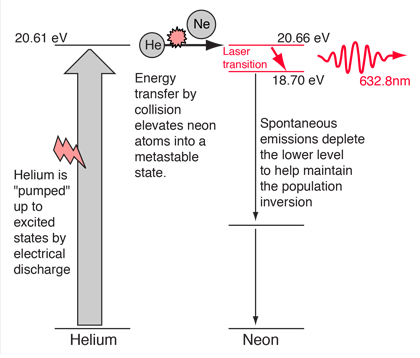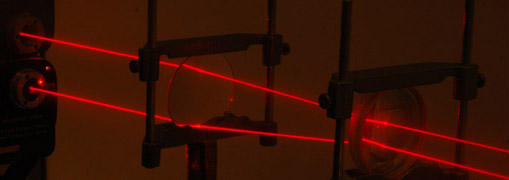Helium-Neon Laser
The most common and inexpensive gas laser, the helium-neon laser is usually constructed to operate in the red at 632.8 nm. It can also be constructed to produce laser action in the green at 543.5 nm and in the infrared at 1523 nm.
  | One of the excited levels of helium at 20.61 eV is very close to a level in neon at 20.66 eV, so close in fact that upon collision of a helium and a neon atom, the energy can be transferred from the helium to the neon atom. Helium-neon lasers are common in the introductory physics laboratories, but they can still be dangerous! According to Garmire, an unfocused 1-mW HeNe laser has a brightness equal to sunshine on a clear day (0.1 watt/cm2) and is just as dangerous to stare at directly. |
The helium gas in the laser tube provides the pumping medium to attain the necessary population inversion for laser action.

This shows the beams from two helium-neon lasers passing through two lenses arranged in the Galilean telescope geometry. The beams were made visible with a spray can of artificial smoke.
| More details about helium-neon laser |
Laser concepts
Laser types
| HyperPhysics***** Quantum Physics ***** Optics | R Nave |